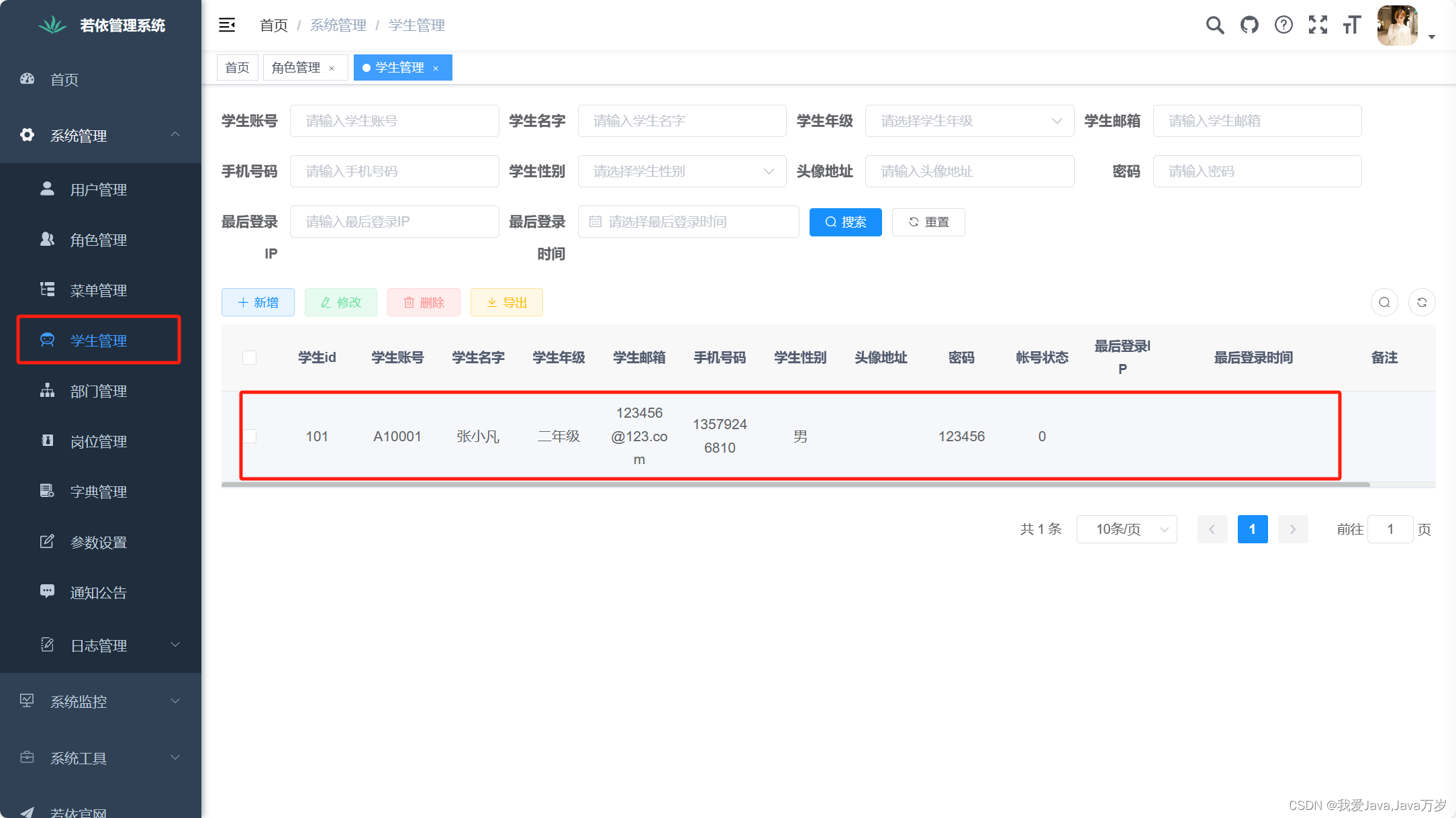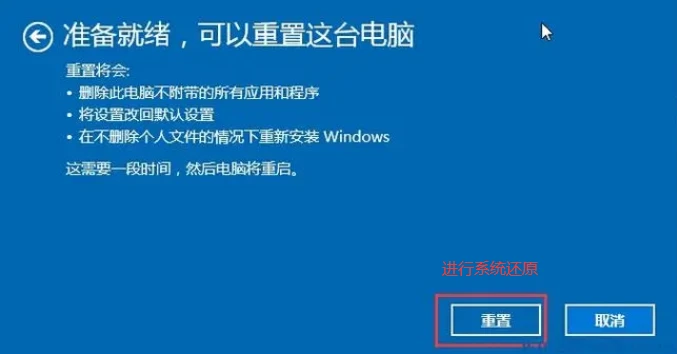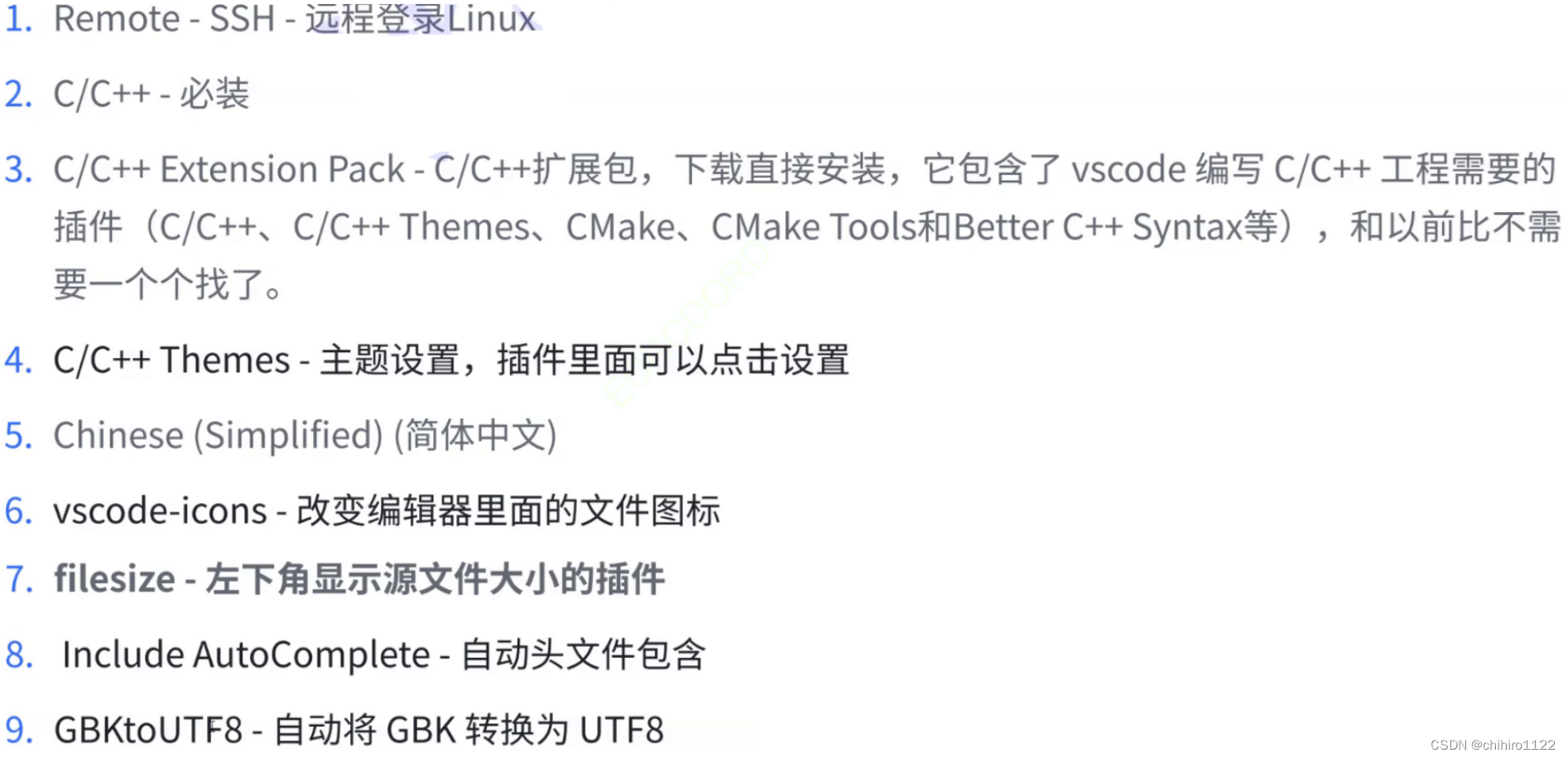原文:Python 高性能 web 框架 - FastApi 全面指南 - 知乎
一、简介
FastAPI 是一个用于构建 API 的现代、快速(高性能)的 web 框架,使用 Python 3.6+ 并基于标准的 Python 类型提示。
它具有如下这些优点:
- 快速:可与 NodeJS 和 Go 比肩的极高性能(归功于 Starlette 和 Pydantic)
- 高效编码:提高功能开发速度约 200% 至 300%
- 更少 bug:减少约 40% 的人为(开发者)导致错误。
- 智能:极佳的编辑器支持。处处皆可自动补全,减少调试时间
- 简单:设计的易于使用和学习,阅读文档的时间更短
- 简短:使代码重复最小化。通过不同的参数声明实现丰富功能。bug 更少
- 健壮:生产可用级别的代码。还有自动生成的交互式文档
- 标准化:基于(并完全兼容)API 的相关开放标准:OpenAPI (以前被称为 Swagger) 和 JSON Schema。
二、安装
pip install fastapiASGI 服务器可以使用uvicorn:
pip install uvicorn[standard]三、简单示例
创建一个 main.py 文件并写入以下内容:
from typing import Optional
from fastapi import FastAPI
app = FastAPI()
@app.get("/")
def read_root():
return {"Hello": "World"}
@app.get("/items/{item_id}")
def read_item(item_id: int, q: Optional[str] = None):
return {"item_id": item_id, "q": q}
启动服务器:
uvicorn main:app --reload访问URL:http://127.0.0.1:8000/items/5?q=somequery,你将会看到如下 JSON 响应:
{"item_id": 5, "q": "somequery"}访问URL:http://127.0.0.1:8000/docs,你会看到自动生成的交互式 API 文档,由Swagger UI 生成:

访问URL:http://127.0.0.1:8000/redoc,你会看到另一个自动生成的文档(由ReDoc生成):

四、请求
使用与 Python 格式化字符串相同的语法来声明路径"参数"或"变量":
from fastapi import FastAPI
app = FastAPI()
@app.get("/items/{item_id}")
async def read_item(item_id):
return {"item_id": item_id}路径参数item_id的值将作为参数item_id传递给你的函数。声明不属于路径参数的其他函数参数时,它们将被自动解释为"查询字符串"参数:
from fastapi import FastAPI
app = FastAPI()
fake_items_db = [{"item_name": "Foo"}, {"item_name": "Bar"}, {"item_name": "Baz"}]
@app.get("/items/")
async def read_item(skip: int = 0, limit: int = 10):
return fake_items_db[skip : skip + limit]查询字符串是键值对的集合,这些键值对位于 URL 的?之后,并以&符号分隔。
可以使用Query对查询进行额外的校验:
from typing import Optional
from fastapi import FastAPI, Query
app = FastAPI()
@app.get("/items/")
async def read_items(q: Optional[str] = Query(None, max_length=50)):
results = {"items": [{"item_id": "Foo"}, {"item_id": "Bar"}]}
if q:
results.update({"q": q})
return resultsQuery 有如下这些字段校验:
- min_length 最小长度
- max_length 最大长度
- regex 正则匹配
- Query 第一个参数为默认值,
...表示是必需的
Path和Query用法一样,也能对查询字段进行校验。
而且你还可以声明数值校验:
from fastapi import FastAPI, Path, Query
app = FastAPI()
@app.get("/items/{item_id}")
async def read_items(
*,
item_id: int = Path(..., title="The ID of the item to get", ge=0, le=1000),
q: str,
size: float = Query(..., gt=0, lt=10.5)
):
results = {"item_id": item_id}
if q:
results.update({"q": q})
return resultsgt:大于ge:大于等于lt:小于le:小于等于
类似的还有Cookie:
from typing import Optional
from fastapi import Cookie, FastAPI
app = FastAPI()
@app.get("/items/")
async def read_items(ads_id: Optional[str] = Cookie(None)):
return {"ads_id": ads_id}以及Header:
from typing import Optional
from fastapi import FastAPI, Header
app = FastAPI()
@app.get("/items/")
async def read_items(user_agent: Optional[str] = Header(None)):
return {"User-Agent": user_agent}还可以为路径设置tags标签进行分组:
from typing import Optional, Set
from fastapi import FastAPI
from pydantic import BaseModel
app = FastAPI()
class Item(BaseModel):
name: str
description: Optional[str] = None
price: float
tax: Optional[float] = None
tags: Set[str] = []
@app.post("/items/", response_model=Item, tags=["items"])
async def create_item(item: Item):
return item
@app.get("/items/", tags=["items"])
async def read_items():
return [{"name": "Foo", "price": 42}]
@app.get("/users/", tags=["users"])
async def read_users():
return [{"username": "johndoe"}] 
还可以设置summary 和 description:
from typing import Optional, Set
from fastapi import FastAPI
from pydantic import BaseModel
app = FastAPI()
class Item(BaseModel):
name: str
description: Optional[str] = None
price: float
tax: Optional[float] = None
tags: Set[str] = []
@app.post(
"/items/",
response_model=Item,
summary="Create an item",
description="Create an item with all the information, name, description, price, tax and a set of unique tags",
)
async def create_item(item: Item):
return item多行注释:
from typing import Optional, Set
from fastapi import FastAPI
from pydantic import BaseModel
app = FastAPI()
class Item(BaseModel):
name: str
description: Optional[str] = None
price: float
tax: Optional[float] = None
tags: Set[str] = []
@app.post("/items/", response_model=Item, summary="Create an item")
async def create_item(item: Item):
"""
Create an item with all the information:
- **name**: each item must have a name
- **description**: a long description
- **price**: required
- **tax**: if the item doesn't have tax, you can omit this
- **tags**: a set of unique tag strings for this item
"""
return item
废弃路由:
from fastapi import FastAPI
app = FastAPI()
@app.get("/items/", tags=["items"])
async def read_items():
return [{"name": "Foo", "price": 42}]
@app.get("/users/", tags=["users"])
async def read_users():
return [{"username": "johndoe"}]
@app.get("/elements/", tags=["items"], deprecated=True)
async def read_elements():
return [{"item_id": "Foo"}]
五、响应
使用response_model参数来声明用于响应的模型:
from typing import List, Optional
from fastapi import FastAPI
from pydantic import BaseModel
app = FastAPI()
class Item(BaseModel):
name: str
description: Optional[str] = None
price: float
tax: Optional[float] = None
tags: List[str] = []
@app.post("/items/", response_model=Item)
async def create_item(item: Item):
return itemresponse_model_exclude_unset=True:响应中将不会包含那些默认值,而是仅有实际设置的值response_model_include包含哪些属性response_model_exclude省略某些属性
status_code参数来声明用于响应的 HTTP 状态码:
from fastapi import FastAPI
app = FastAPI()
@app.post("/items/", status_code=201)
async def create_item(name: str):
return {"name": name}表单字段时,要使用Form:
from fastapi import FastAPI, Form
app = FastAPI()
@app.post("/login/")
async def login(username: str = Form(...), password: str = Form(...)):
return {"username": username} File用于定义客户端的上传文件(接收上传文件,要预先安装python-multipart):
from fastapi import FastAPI, File, UploadFile
app = FastAPI()
@app.post("/files/")
async def create_file(file: bytes = File(...)):
return {"file_size": len(file)}
@app.post("/uploadfile/")
async def create_upload_file(file: UploadFile = File(...)):
return {"filename": file.filename}向客户端返回 HTTP 错误响应,可以使用HTTPException。
from fastapi import FastAPI, HTTPException
app = FastAPI()
items = {"foo": "The Foo Wrestlers"}
@app.get("/items/{item_id}")
async def read_item(item_id: str):
if item_id not in items:
raise HTTPException(status_code=404, detail="Item not found")
return {"item": items[item_id]}使用response_description设置响应描述:
from typing import Optional, Set
from fastapi import FastAPI
from pydantic import BaseModel
app = FastAPI()
class Item(BaseModel):
name: str
description: Optional[str] = None
price: float
tax: Optional[float] = None
tags: Set[str] = []
@app.post(
"/items/",
response_model=Item,
summary="Create an item",
response_description="The created item",
)
async def create_item(item: Item):
"""
Create an item with all the information:
- **name**: each item must have a name
- **description**: a long description
- **price**: required
- **tax**: if the item doesn't have tax, you can omit this
- **tags**: a set of unique tag strings for this item
"""
return item
六、JSON兼容
在某些情况下,你可能需要把数据(例如Pydantic模型)转换成JSON形式,例如存储在数据库中,这时候你就需要用到jsonable_encoder()方法。
from datetime import datetime
from typing import Optional
from fastapi import FastAPI
from fastapi.encoders import jsonable_encoder
from pydantic import BaseModel
fake_db = {}
class Item(BaseModel):
title: str
timestamp: datetime
description: Optional[str] = None
app = FastAPI()
@app.put("/items/{id}")
def update_item(id: str, item: Item):
json_compatible_item_data = jsonable_encoder(item)
fake_db[id] = json_compatible_item_data 七、依赖注入
FastAPI 提供了简单易用,但功能强大的依赖注入系统,可以让开发人员轻松地把组件集成至FastAPI。
什么是「依赖注入」?
依赖注入是一种消除类之间依赖关系的设计模式。把有依赖关系的类放到容器中,解析出这些类的实例,就是依赖注入。目的是实现类的解耦。
示例:
from typing import Optional
from fastapi import Depends, FastAPI
app = FastAPI()
async def common_parameters(q: Optional[str] = None, skip: int = 0, limit: int = 100):
return {"q": q, "skip": skip, "limit": limit}
@app.get("/items/")
async def read_items(commons: dict = Depends(common_parameters)):
return commons
@app.get("/users/")
async def read_users(commons: dict = Depends(common_parameters)):
return commons本例中的依赖项预期接收如下参数:
- 类型为
str的可选查询参数q - 类型为
int的可选查询参数skip,默认值是0 - 类型为
int的可选查询参数limit,默认值是100
然后,依赖项函数返回包含这些值的 dict。
使用Class作为依赖:
from typing import Optional
from fastapi import Depends, FastAPI
app = FastAPI()
fake_items_db = [{"item_name": "Foo"}, {"item_name": "Bar"}, {"item_name": "Baz"}]
class CommonQueryParams:
def __init__(self, q: Optional[str] = None, skip: int = 0, limit: int = 100):
self.q = q
self.skip = skip
self.limit = limit
@app.get("/items/")
async def read_items(commons: CommonQueryParams = Depends(CommonQueryParams)):
response = {}
if commons.q:
response.update({"q": commons.q})
items = fake_items_db[commons.skip : commons.skip + commons.limit]
response.update({"items": items})
return response使用嵌套子依赖:
from typing import Optional
from fastapi import Cookie, Depends, FastAPI
app = FastAPI()
def query_extractor(q: Optional[str] = None):
return q
def query_or_cookie_extractor(
q: str = Depends(query_extractor), last_query: Optional[str] = Cookie(None)
):
if not q:
return last_query
return q
@app.get("/items/")
async def read_query(query_or_default: str = Depends(query_or_cookie_extractor)):
return {"q_or_cookie": query_or_default}在路径中使用依赖:
from fastapi import Depends, FastAPI, Header, HTTPException
app = FastAPI()
async def verify_token(x_token: str = Header(...)):
if x_token != "fake-super-secret-token":
raise HTTPException(status_code=400, detail="X-Token header invalid")
async def verify_key(x_key: str = Header(...)):
if x_key != "fake-super-secret-key":
raise HTTPException(status_code=400, detail="X-Key header invalid")
return x_key
@app.get("/items/", dependencies=[Depends(verify_token), Depends(verify_key)])
async def read_items():
return [{"item": "Foo"}, {"item": "Bar"}]全局依赖项,可以为所有路径操作应用该依赖项:
from fastapi import Depends, FastAPI, Header, HTTPException
async def verify_token(x_token: str = Header(...)):
if x_token != "fake-super-secret-token":
raise HTTPException(status_code=400, detail="X-Token header invalid")
async def verify_key(x_key: str = Header(...)):
if x_key != "fake-super-secret-key":
raise HTTPException(status_code=400, detail="X-Key header invalid")
return x_key
app = FastAPI(dependencies=[Depends(verify_token), Depends(verify_key)])
@app.get("/items/")
async def read_items():
return [{"item": "Portal Gun"}, {"item": "Plumbus"}]
@app.get("/users/")
async def read_users():
return [{"username": "Rick"}, {"username": "Morty"}]八、安全
在许多框架和系统中,仅处理安全性和身份认证就会花费大量的精力和代码(在许多情况下,可能占编写的所有代码的 50% 或更多)。
FastAPI 提供了多种工具,可帮助你以标准的方式轻松、快速地处理安全性,而无需研究和学习所有的安全规范。
JWT 表示 「JSON Web Tokens」。
它是一个将 JSON 对象编码为密集且没有空格的长字符串的标准。字符串看起来像这样:
eyJhbGciOiJIUzI1NiIsInR5cCI6IkpXVCJ9.eyJzdWIiOiIxMjM0NTY3ODkwIiwibmFtZSI6IkpvaG4gRG9lIiwiaWF0IjoxNTE2MjM5MDIyfQ.SflKxwRJSMeKKF2QT4fwpMeJf36POk6yJV_adQssw5c它没有被加密,因此任何人都可以从字符串内容中还原数据。
但它经过了签名。因此,当你收到一个由你发出的令牌时,可以校验令牌是否真的由你发出。
通过这种方式,你可以创建一个有效期为 1 周的令牌。然后当用户第二天使用令牌重新访问时,你知道该用户仍然处于登入状态。
一周后令牌将会过期,用户将不会通过认证,必须再次登录才能获得一个新令牌。而且如果用户(或第三方)试图修改令牌以篡改过期时间,你将因为签名不匹配而能够发觉。
OAuth2
OAuth2是一个规范,它定义了几种处理身份认证和授权的方法。
它是一个相当广泛的规范,涵盖了一些复杂的使用场景。
它包括了使用「第三方」进行身份认证的方法。
这就是所有带有「使用 Facebook,Google,Twitter,GitHub 登录」的系统背后所使用的机制。
下面演示了如何使用OAuth2 和 JWT进行用户验证。
from datetime import datetime, timedelta
from typing import Optional
from fastapi import Depends, FastAPI, HTTPException, status
from fastapi.security import OAuth2PasswordBearer, OAuth2PasswordRequestForm
from jose import JWTError, jwt
from passlib.context import CryptContext
from pydantic import BaseModel
# to get a string like this run:
# openssl rand -hex 32
SECRET_KEY = "09d25e094faa6ca2556c818166b7a9563b93f7099f6f0f4caa6cf63b88e8d3e7"
ALGORITHM = "HS256"
ACCESS_TOKEN_EXPIRE_MINUTES = 30
fake_users_db = {
"johndoe": {
"username": "johndoe",
"full_name": "John Doe",
"email": "johndoe@example.com",
"hashed_password": "$2b$12$EixZaYVK1fsbw1ZfbX3OXePaWxn96p36WQoeG6Lruj3vjPGga31lW",
"disabled": False,
}
}
class Token(BaseModel):
access_token: str
token_type: str
class TokenData(BaseModel):
username: Optional[str] = None
class User(BaseModel):
username: str
email: Optional[str] = None
full_name: Optional[str] = None
disabled: Optional[bool] = None
class UserInDB(User):
hashed_password: str
pwd_context = CryptContext(schemes=["bcrypt"], deprecated="auto")
oauth2_scheme = OAuth2PasswordBearer(tokenUrl="token")
app = FastAPI()
def verify_password(plain_password, hashed_password):
return pwd_context.verify(plain_password, hashed_password)
def get_password_hash(password):
return pwd_context.hash(password)
def get_user(db, username: str):
if username in db:
user_dict = db[username]
return UserInDB(**user_dict)
def authenticate_user(fake_db, username: str, password: str):
user = get_user(fake_db, username)
if not user:
return False
if not verify_password(password, user.hashed_password):
return False
return user
def create_access_token(data: dict, expires_delta: Optional[timedelta] = None):
to_encode = data.copy()
if expires_delta:
expire = datetime.utcnow() + expires_delta
else:
expire = datetime.utcnow() + timedelta(minutes=15)
to_encode.update({"exp": expire})
encoded_jwt = jwt.encode(to_encode, SECRET_KEY, algorithm=ALGORITHM)
return encoded_jwt
async def get_current_user(token: str = Depends(oauth2_scheme)):
credentials_exception = HTTPException(
status_code=status.HTTP_401_UNAUTHORIZED,
detail="Could not validate credentials",
headers={"WWW-Authenticate": "Bearer"},
)
try:
payload = jwt.decode(token, SECRET_KEY, algorithms=[ALGORITHM])
username: str = payload.get("sub")
if username is None:
raise credentials_exception
token_data = TokenData(username=username)
except JWTError:
raise credentials_exception
user = get_user(fake_users_db, username=token_data.username)
if user is None:
raise credentials_exception
return user
async def get_current_active_user(current_user: User = Depends(get_current_user)):
if current_user.disabled:
raise HTTPException(status_code=400, detail="Inactive user")
return current_user
@app.post("/token", response_model=Token)
async def login_for_access_token(form_data: OAuth2PasswordRequestForm = Depends()):
user = authenticate_user(fake_users_db, form_data.username, form_data.password)
if not user:
raise HTTPException(
status_code=status.HTTP_401_UNAUTHORIZED,
detail="Incorrect username or password",
headers={"WWW-Authenticate": "Bearer"},
)
access_token_expires = timedelta(minutes=ACCESS_TOKEN_EXPIRE_MINUTES)
access_token = create_access_token(
data={"sub": user.username}, expires_delta=access_token_expires
)
return {"access_token": access_token, "token_type": "bearer"}
@app.get("/users/me/", response_model=User)
async def read_users_me(current_user: User = Depends(get_current_active_user)):
return current_user
@app.get("/users/me/items/")
async def read_own_items(current_user: User = Depends(get_current_active_user)):
return [{"item_id": "Foo", "owner": current_user.username}]OAuth2PasswordBearer:访问tokenUrl地址,获取token并返回OAuth2PasswordRequestForm是一个类依赖项,声明了如下的请求表单:usernamepassword- 一个可选的
scope字段,是一个由空格分隔的字符串组成的大字符串 - 一个可选的
grant_type - 一个可选的
client_id - 一个可选的
client_secret
九、中间件
"中间件"是一个函数,它在每个请求被特定的路径操作处理之前,以及在每个响应返回之前工作。
要创建中间件你可以在函数的顶部使用装饰器 @app.middleware("http").
中间件参数接收如下参数:
request- 一个函数
call_next它将接收request作为参数- 这个函数将
request传递给相应的 路径操作 - 然后它将返回由相应的路径操作生成的
response
- 这个函数将
- 然后你可以在返回
response前进一步修改它
import time
from fastapi import FastAPI, Request
app = FastAPI()
@app.middleware("http")
async def add_process_time_header(request: Request, call_next):
start_time = time.time()
response = await call_next(request)
process_time = time.time() - start_time
response.headers["X-Process-Time"] = str(process_time)
return response十、跨域设置
你可以在FastAPI应用中使用CORSMiddleware来配置跨域:
from fastapi import FastAPI
from fastapi.middleware.cors import CORSMiddleware
app = FastAPI()
origins = [
"http://localhost.tiangolo.com",
"https://localhost.tiangolo.com",
"http://localhost",
"http://localhost:8080",
]
app.add_middleware(
CORSMiddleware,
allow_origins=origins,
allow_credentials=True,
allow_methods=["*"],
allow_headers=["*"],
)
@app.get("/")
async def main():
return {"message": "Hello World"}它支持以下参数:
allow_origins- 一个允许跨域请求的源列表。例如['https://example.org', 'https://www.example.org']。你可以使用['*']允许任何源。allow_origin_regex- 一个正则表达式字符串,匹配的源允许跨域请求。例如'https://.*\.example\.org'。allow_methods- 一个允许跨域请求的 HTTP 方法列表。默认为['GET']。你可以使用['*']来允许所有标准方法。allow_headers- 一个允许跨域请求的 HTTP 请求头列表。默认为[]。你可以使用['*']允许所有的请求头。Accept、Accept-Language、Content-Language以及Content-Type请求头总是允许 CORS 请求。allow_credentials- 指示跨域请求支持 cookies。默认是False。另外,允许凭证时allow_origins不能设定为['*'],必须指定源。expose_headers- 指示可以被浏览器访问的响应头。默认为[]。max_age- 设定浏览器缓存 CORS 响应的最长时间,单位是秒。默认为600。
十一、APIRouter
使用APIRouter同样也能对路由进行操作:
from fastapi import APIRouter
router = APIRouter()
@router.get("/users/", tags=["users"])
async def read_users():
return [{"username": "Rick"}, {"username": "Morty"}]
@router.get("/users/me", tags=["users"])
async def read_user_me():
return {"username": "fakecurrentuser"}
@router.get("/users/{username}", tags=["users"])
async def read_user(username: str):
return {"username": username}为所有路径进行同样的操作:
from fastapi import APIRouter, Depends, HTTPException
from ..dependencies import get_token_header
router = APIRouter(
prefix="/items",
tags=["items"],
dependencies=[Depends(get_token_header)],
responses={404: {"description": "Not found"}},
)
fake_items_db = {"plumbus": {"name": "Plumbus"}, "gun": {"name": "Portal Gun"}}
@router.get("/")
async def read_items():
return fake_items_db
@router.get("/{item_id}")
async def read_item(item_id: str):
if item_id not in fake_items_db:
raise HTTPException(status_code=404, detail="Item not found")
return {"name": fake_items_db[item_id]["name"], "item_id": item_id}
@router.put(
"/{item_id}",
tags=["custom"],
responses={403: {"description": "Operation forbidden"}},
)
async def update_item(item_id: str):
if item_id != "plumbus":
raise HTTPException(
status_code=403, detail="You can only update the item: plumbus"
)
return {"item_id": item_id, "name": "The great Plumbus"}该示例,就为所有的路径添加了前缀,标签、依赖和返回,而不用在每个路径上单独声明,简化了代码。
十二、Background Tasks
background tasks 就是在返回响应之后立即运行的任务。
from fastapi import BackgroundTasks, FastAPI
app = FastAPI()
def write_notification(email: str, message=""):
with open("log.txt", mode="w") as email_file:
content = f"notification for {email}: {message}"
email_file.write(content)
@app.post("/send-notification/{email}")
async def send_notification(email: str, background_tasks: BackgroundTasks):
background_tasks.add_task(write_notification, email, message="some notification")
return {"message": "Notification sent in the background"}十三、静态文件
首先需要安装aiofiles:
pip install aiofiles 使用:
from fastapi import FastAPI
from fastapi.staticfiles import StaticFiles
app = FastAPI()
app.mount("/static", StaticFiles(directory="static"), name="static")十四、子应用
如果你有2个独立的FastAPI的应用,你可以设置一个为主应用,另外一个为子应用:
from fastapi import FastAPI
app = FastAPI()
@app.get("/app")
def read_main():
return {"message": "Hello World from main app"}
subapi = FastAPI()
@subapi.get("/sub")
def read_sub():
return {"message": "Hello World from sub API"}
app.mount("/subapi", subapi)十五、代理
可以使用root_path来设置代理。
使用命令行:
uvicorn main:app --root-path /api/v1 或者在代码中设置:
from fastapi import FastAPI, Request
app = FastAPI(root_path="/api/v1")
@app.get("/app")
def read_main(request: Request):
return {"message": "Hello World", "root_path": request.scope.get("root_path")}十六、使用模板
你可以在FastAPI中使用任何模板,常用的选择是Jinja2。
pip install jinja2使用:
from fastapi import FastAPI, Request
from fastapi.responses import HTMLResponse
from fastapi.staticfiles import StaticFiles
from fastapi.templating import Jinja2Templates
app = FastAPI()
app.mount("/static", StaticFiles(directory="static"), name="static")
templates = Jinja2Templates(directory="templates")
@app.get("/items/{id}", response_class=HTMLResponse)
async def read_item(request: Request, id: str):
return templates.TemplateResponse("item.html", {"request": request, "id": id})模板文件templates/item.html:
<html>
<head>
<title>Item Details</title>
<link href="{{ url_for('static', path='/styles.css') }}" rel="stylesheet">
</head>
<body>
<h1>Item ID: {{ id }}</h1>
</body>
</html>十七:WebSockets
from fastapi import FastAPI, WebSocket
from fastapi.responses import HTMLResponse
app = FastAPI()
html = """
<!DOCTYPE html>
<html>
<head>
<title>Chat</title>
</head>
<body>
<h1>WebSocket Chat</h1>
<form action="" onsubmit="sendMessage(event)">
<input type="text" id="messageText" autocomplete="off"/>
<button>Send</button>
</form>
<ul id='messages'>
</ul>
<script>
var ws = new WebSocket("ws://localhost:8000/ws");
ws.onmessage = function(event) {
var messages = document.getElementById('messages')
var message = document.createElement('li')
var content = document.createTextNode(event.data)
message.appendChild(content)
messages.appendChild(message)
};
function sendMessage(event) {
var input = document.getElementById("messageText")
ws.send(input.value)
input.value = ''
event.preventDefault()
}
</script>
</body>
</html>
"""
@app.get("/")
async def get():
return HTMLResponse(html)
@app.websocket("/ws")
async def websocket_endpoint(websocket: WebSocket):
await websocket.accept()
while True:
data = await websocket.receive_text()
await websocket.send_text(f"Message text was: {data}")十八、startup - shutdown事件
你可以设置应用的启动和关闭事件回调函数:
from fastapi import FastAPI
app = FastAPI()
items = {}
@app.on_event("shutdown")
def shutdown_event():
with open("log.txt", mode="a") as log:
log.write("Application shutdown")
@app.on_event("startup")
async def startup_event():
items["foo"] = {"name": "Fighters"}
items["bar"] = {"name": "Tenders"}
@app.get("/items/{item_id}")
async def read_items(item_id: str):
return items[item_id]
















